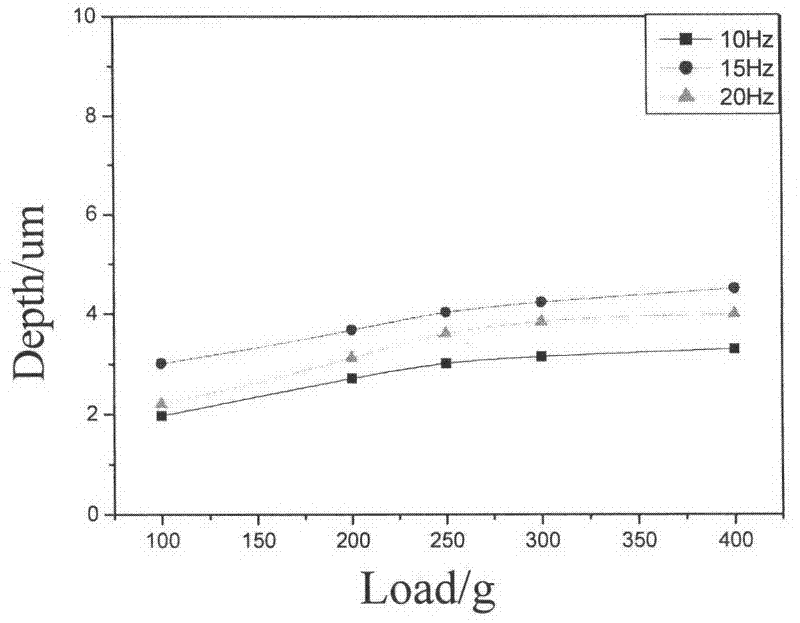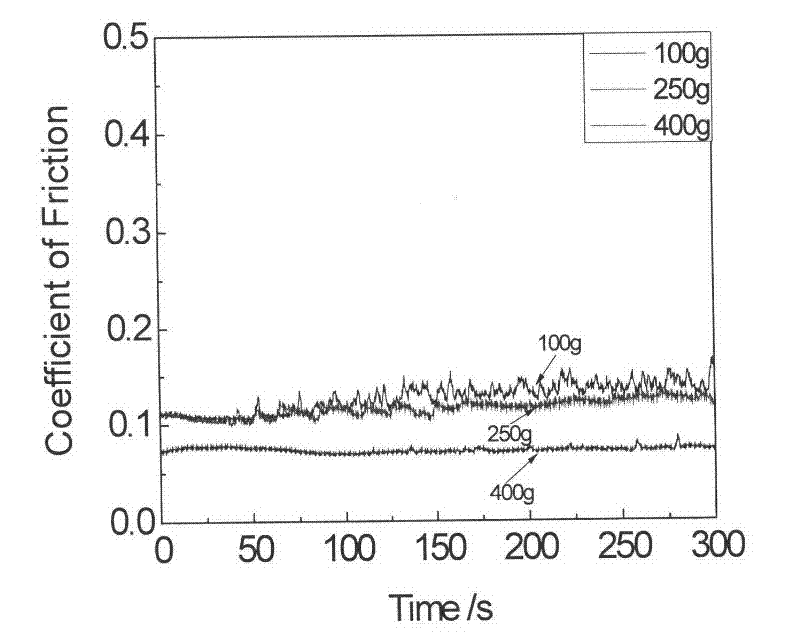Method for raising surface friction and wear properties by changing loads
A technology of wear performance and surface friction, which is applied in testing wear resistance and other directions, and can solve problems such as no patent publications
- Summary
- Abstract
- Description
- Claims
- Application Information
AI Technical Summary
Problems solved by technology
Method used
Image
Examples
Embodiment 1
[0009] Plane the surface of No. 45 carbon steel to obtain a surface with a roughness of Ra3.2; then perform quenching and tempering treatment, heat the workpiece with a length of 100 mm × width 85 mm × height 20 mm to 840 ° C for 2 hours, and then quickly put it in 10 % saline solution for cold quenching to make it completely hardened, and then high temperature tempering treatment for the workpiece, 560 ° C for 1.5 hours, the hardness of the obtained No. 45 carbon steel is about 35HRC; finally the treated No. 45 carbon steel The steel is processed into a test piece with dimensions of 22 mm long x 20 mm wide x 4 mm high. Before the friction test, alcohol must be used to wipe the surface of the specimen along the direction of the texture, and lubricating oil is used to lubricate the surface during the friction process. The friction and wear test was carried out on a multifunctional friction and wear testing machine, using the reciprocating friction method, setting the loading lo...
Embodiment 2
[0011] No. 45 carbon steel was planed to obtain a wavy surface texture with a roughness of Ra3.2; then quenched and tempered, the workpiece with a length of 100 mm × width 85 mm × height 20 mm was heated to 840 ° C for 2 hours, and then quickly placed Put it into 10% saline solution for cold quenching to make it completely hardened, and then perform high-temperature tempering treatment on the workpiece, keep it at 560°C for 1.5 hours, and the hardness of the obtained No. 45 carbon steel is about 35HRC; finally, the processed No. 45 The carbon steel is processed into a test piece with a size of 22mm long x 20mm wide x 4mm high. Before the friction test, alcohol must be used to wipe the surface of the specimen along the direction of the texture, and lubricating oil is used to lubricate the surface during the friction process. The friction and wear test was carried out on a multifunctional friction and wear testing machine, using the reciprocating friction method, setting the loa...
Embodiment 3
[0013] No. 45 carbon steel was planed to obtain a wavy surface texture with a roughness of Ra3.2; then quenched and tempered, the workpiece with a length of 100 mm × width 85 mm × height 20 mm was heated to 840 ° C for 2 hours, and then quickly placed Put it into 10% saline solution for cold quenching to make it completely hardened, and then perform high-temperature tempering treatment on the workpiece, keep it at 560°C for 1.5 hours, and the hardness of the obtained No. 45 carbon steel is about 35HRC; finally, the processed No. 45 The carbon steel is processed into a test piece with a size of 22mm long x 20mm wide x 4mm high. Before the friction test, alcohol must be used to wipe the surface of the specimen along the direction of the texture, and lubricating oil is used to lubricate the surface during the friction process. The friction and wear test was carried out on a multifunctional friction and wear testing machine, using the reciprocating friction method, setting the loa...
PUM
| Property | Measurement | Unit |
|---|---|---|
| Hardness | aaaaa | aaaaa |
Abstract
Description
Claims
Application Information
 Login to View More
Login to View More - R&D
- Intellectual Property
- Life Sciences
- Materials
- Tech Scout
- Unparalleled Data Quality
- Higher Quality Content
- 60% Fewer Hallucinations
Browse by: Latest US Patents, China's latest patents, Technical Efficacy Thesaurus, Application Domain, Technology Topic, Popular Technical Reports.
© 2025 PatSnap. All rights reserved.Legal|Privacy policy|Modern Slavery Act Transparency Statement|Sitemap|About US| Contact US: help@patsnap.com


